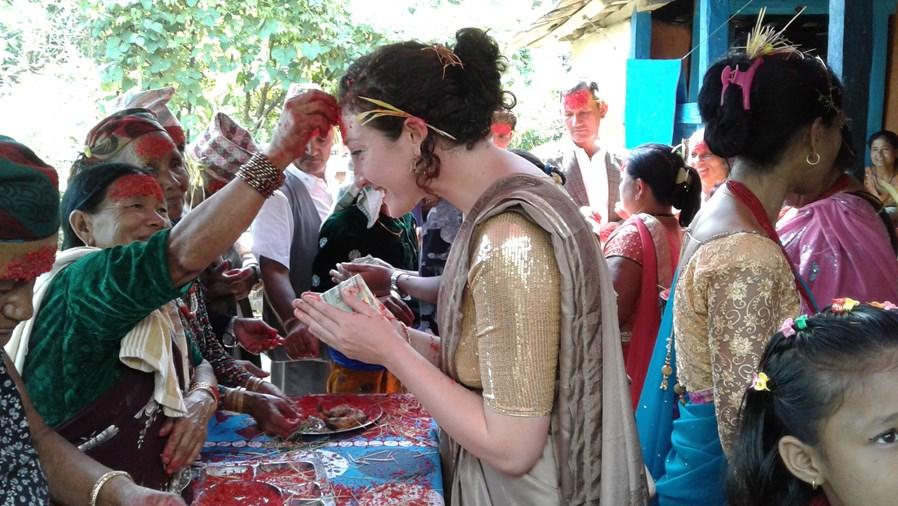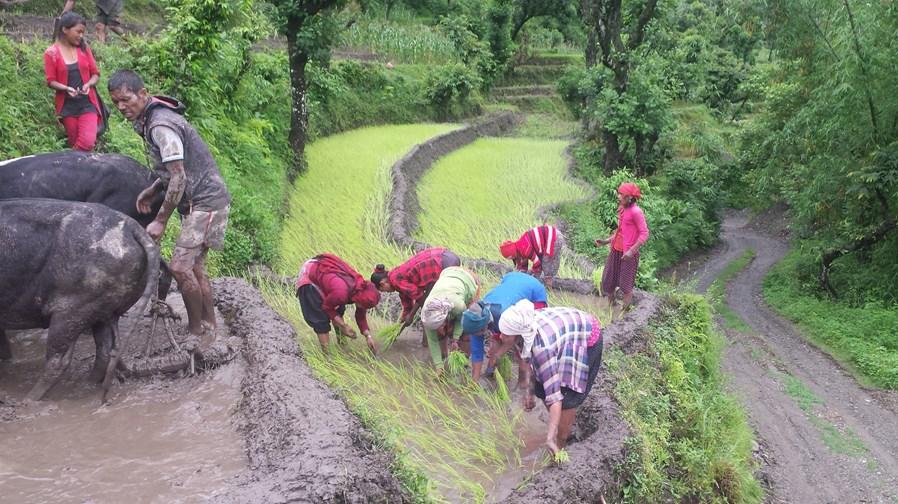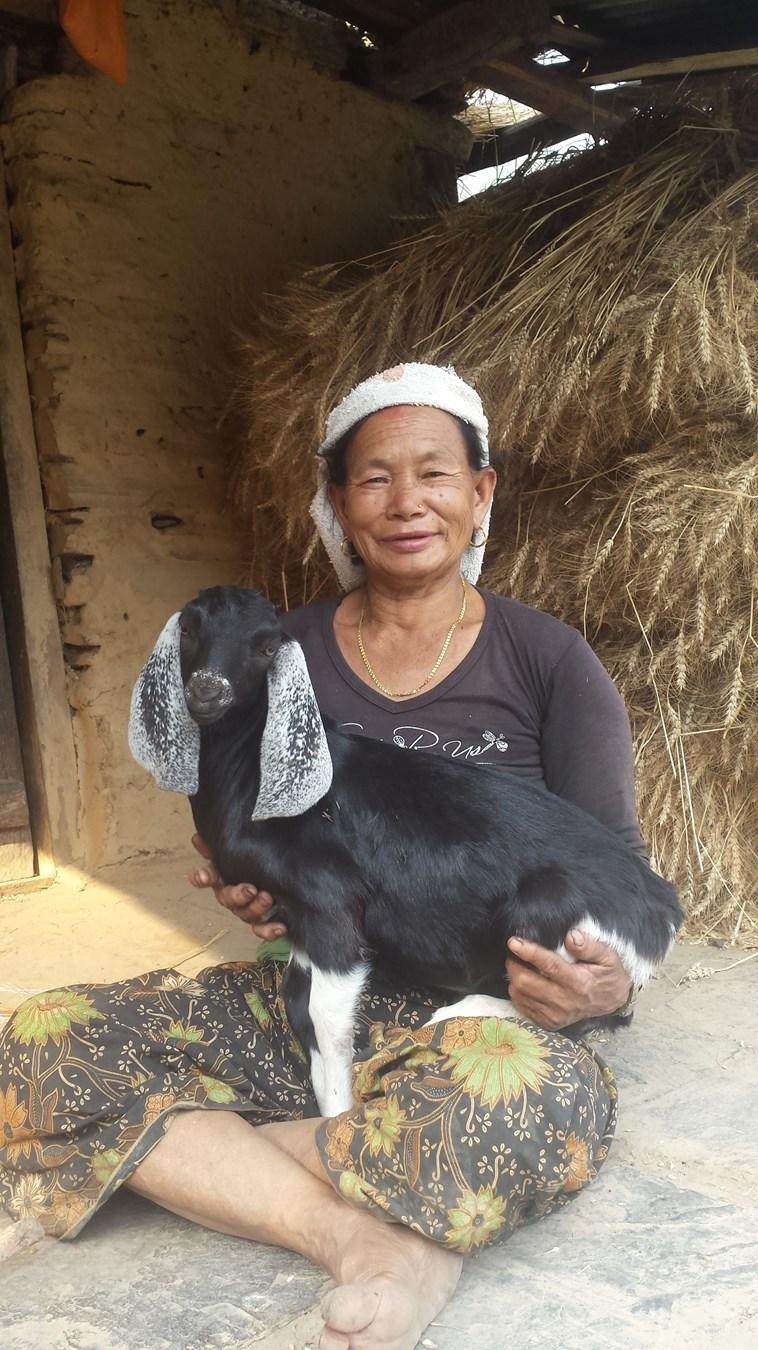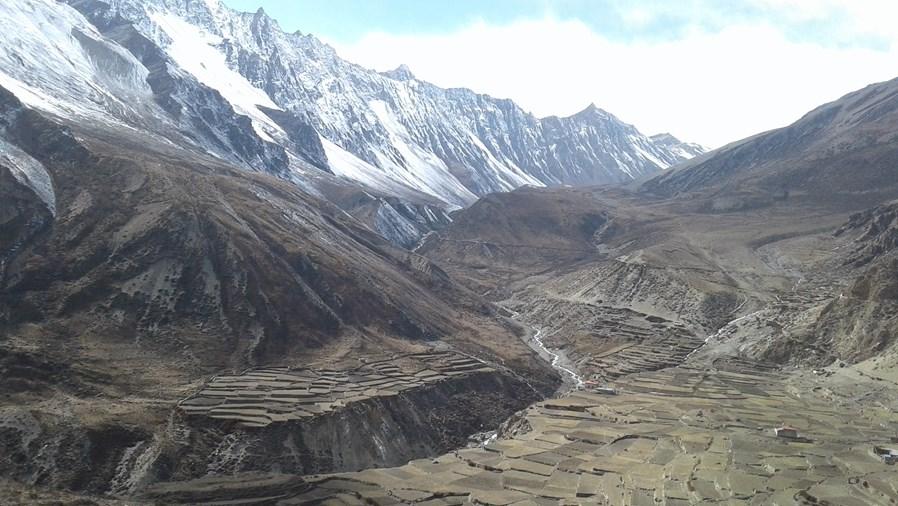
2 minute read
MAKING TEA IN NEPAL
by Lucia Wittenberg (2014)

My host amaa (mother) placing red “tika” on my forehead in celebration of the festival of Dashain.
Advertisement
The key to making good Nepali tea is black pepper. Its distinctive heat and aroma shines through the spice of the cloves, cardamom, and cinnamon. Making good Nepali tea is important. Tea is the cornerstone of Nepali society. Nepalis drink tea two to three times a day: once in the morning, once in the afternoon and sometimes before dinner. They gossip over tea, they laugh over tea; they share their stories and observations of the changing weather over tea. They cry over tea and sit in silence over tea. Tea is a social fly trap; if a neighbor sees you walking by they promptly ask if you’ve drunk tea that day, and whether the answer is yes or no they insist you come over for a cup, or two, or three. Drinking tea with friends and family is not just a way to pass the time, it’s a way to build relationships and talk about goats. So, making good tea is important. If you make a good cup of tea people will be happy to come to your home to sit and drink with you. Your home will soon become a hub for community, and a cascade of good gossip about your tea making skills will spread.
Drinking tea was the easiest way to integrate into my community. It was the best excuse to meet new people. Drinking tea led to conversations about their families, which then led to an invitation to a wedding or worship, which then led to me wearing a sari and dancing like a fool. Drinking tea also led to conversations about their fields, which led to a Q&A sessions about problems in their fields, which eventually led to a training about various ways to over come crop failure, improve soil health, or trying a new crop. In short, drinking tea with people meant doing Peace Corps work and vice versa.

Kids from my village (Salyan) posing for a picture before running off to play volleyball.

Rice planting party in my village. Using oxen to plow the rice paddies, they break up the mud and rocks to make it easier for the rice planting party to hand sow the seedlings. It is traditionally the woman's role to plant the rice, plowing left to the men.

My amaa posing with her favorite goat. She named him “Kali,” which means “black” in Nepali.

My host cousins and I dressed up for a wedding. The woman in the middle dressed in the red saree is the bride.

The village of Nar in Mustang, a high mountain village in northwestern Nepal with deep Tibetan ancestry.

